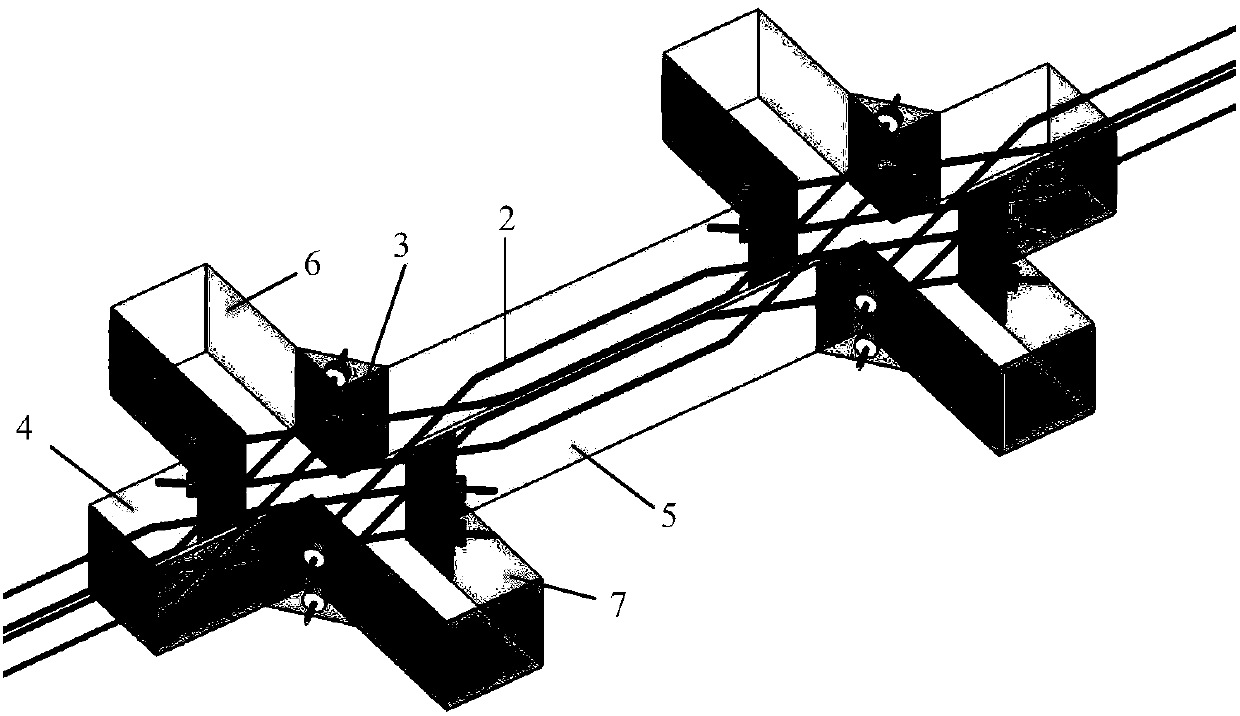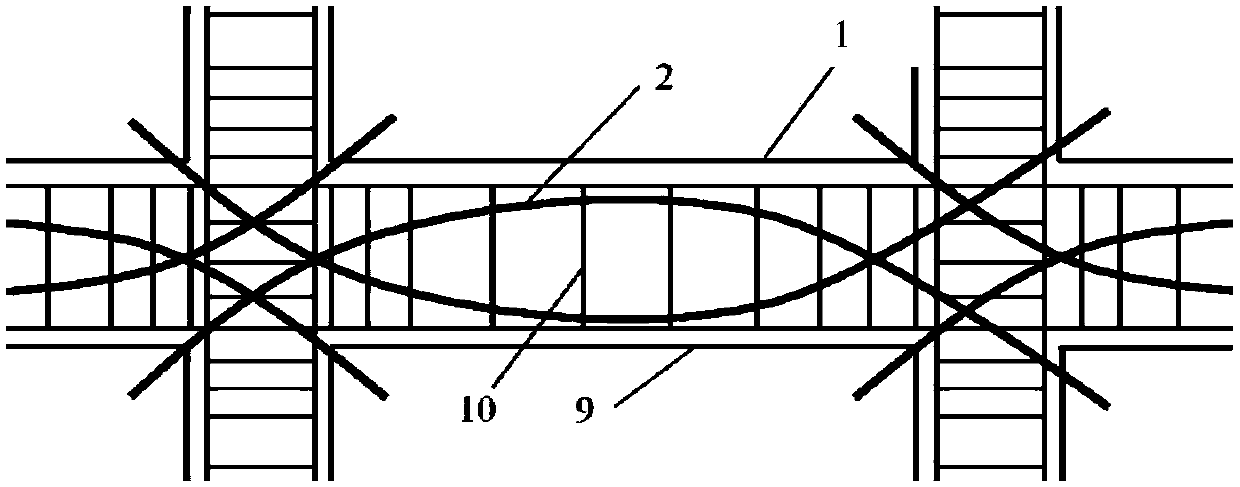Active constrained type cast-in-situ frame beam-column joint system based on retard-bonded prestress technology
A slow-bonded prestressed, beam-column joint technology, applied in protective buildings/shelters, building components, earthquake resistance, etc., can solve the problems of joint hysteresis performance degradation, stiffness degradation, unfavorable construction, etc., to increase construction Effects of burden, improvement of shear resistance, and improvement of bonding performance
- Summary
- Abstract
- Description
- Claims
- Application Information
AI Technical Summary
Problems solved by technology
Method used
Image
Examples
Embodiment Construction
[0020] The specific implementation method of the present invention will be further described below in conjunction with the accompanying drawings and technical solutions.
[0021] An active restraint cast-in-place frame beam-column joint system based on slow-bonded prestressing technology, including cast-in-place frame beam-column joints 1, slow-bonded prestressed tendons 2 and wedge anchors 3. The cast-in-place frame beam-column node 1 is a cross-shaped structure, including the left cast-in-place concrete beam 4, the right cast-in-place concrete beam 5, the upper side cast-in-place concrete column 6, the lower side cast-in-place concrete column 7 and the node core Zone 8, the central part of the cross-shaped structure is the node core zone 8.
[0022] The wedge-shaped anchorage 3 is arranged at the joint between the column and the beam end, and its right-angled sides coincide with the surfaces of the beam and the column respectively. The slow bonded prestressed tendons 2 are ...
PUM
 Login to View More
Login to View More Abstract
Description
Claims
Application Information
 Login to View More
Login to View More - R&D
- Intellectual Property
- Life Sciences
- Materials
- Tech Scout
- Unparalleled Data Quality
- Higher Quality Content
- 60% Fewer Hallucinations
Browse by: Latest US Patents, China's latest patents, Technical Efficacy Thesaurus, Application Domain, Technology Topic, Popular Technical Reports.
© 2025 PatSnap. All rights reserved.Legal|Privacy policy|Modern Slavery Act Transparency Statement|Sitemap|About US| Contact US: help@patsnap.com



